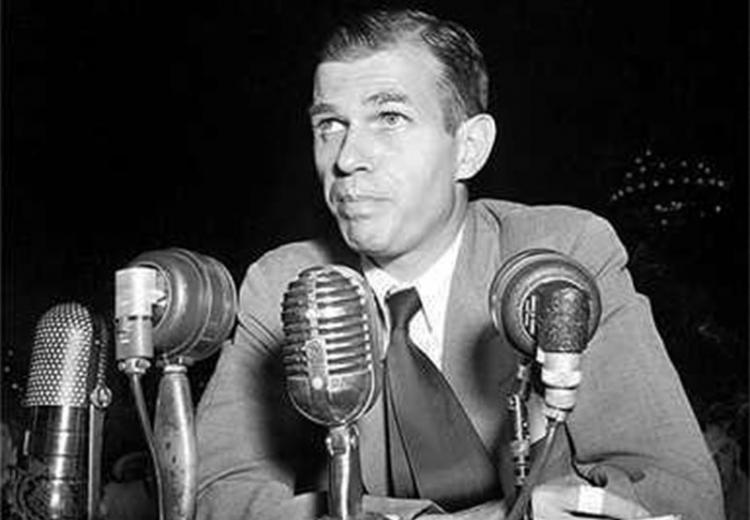Lesson 2: The House Un-American Activities Committee

Alger Hiss, a State Department official, was accused of spying for the Soviet Union in 1948. Soviet archives unearthed many years later backed up these allegations.
The late 1940s and early 1950s were a time of growing tension, both abroad and at home. Relations between the United States and the Soviet Union had deteriorated to the point of "cold war," while domestically the revelation that Soviet spies had infiltrated the U.S. government created a general sense of uneasiness. In 1946 the House Un-American Activities Committee, which had been created as a temporary committee in the 1930s to investigate subversives during World War II, became a permanent standing congressional committee. It quickly took upon itself the responsibility for determining how deeply communists had penetrated into American society.
This lesson will examine the operations of HUAC in the late 1940s. This lesson will ask students to address one fundamental question that is still relevant today: What constitutes an "un-American" activity? In association with that theme, students will determine whether there are some ideas that are so dangerous that even their expression should be limited and whether certain professions—government service, entertainment, education, etc.—are so influential that the personal views of people in them should come under public scrutiny.
Guiding Questions
What constitutes an "un-American" activity?
How did the House Un-American Activities Committee go about defining and investigating such activities?
Learning Objectives
Identify HUAC, and explain its goals and methods
Explain why HUAC targeted Hollywood, and offer an opinion regarding whether this investigation was justifiable
Articulate the issues involved in the Alger Hiss case
Evaluate whether HUAC lived up to its stated purposes
